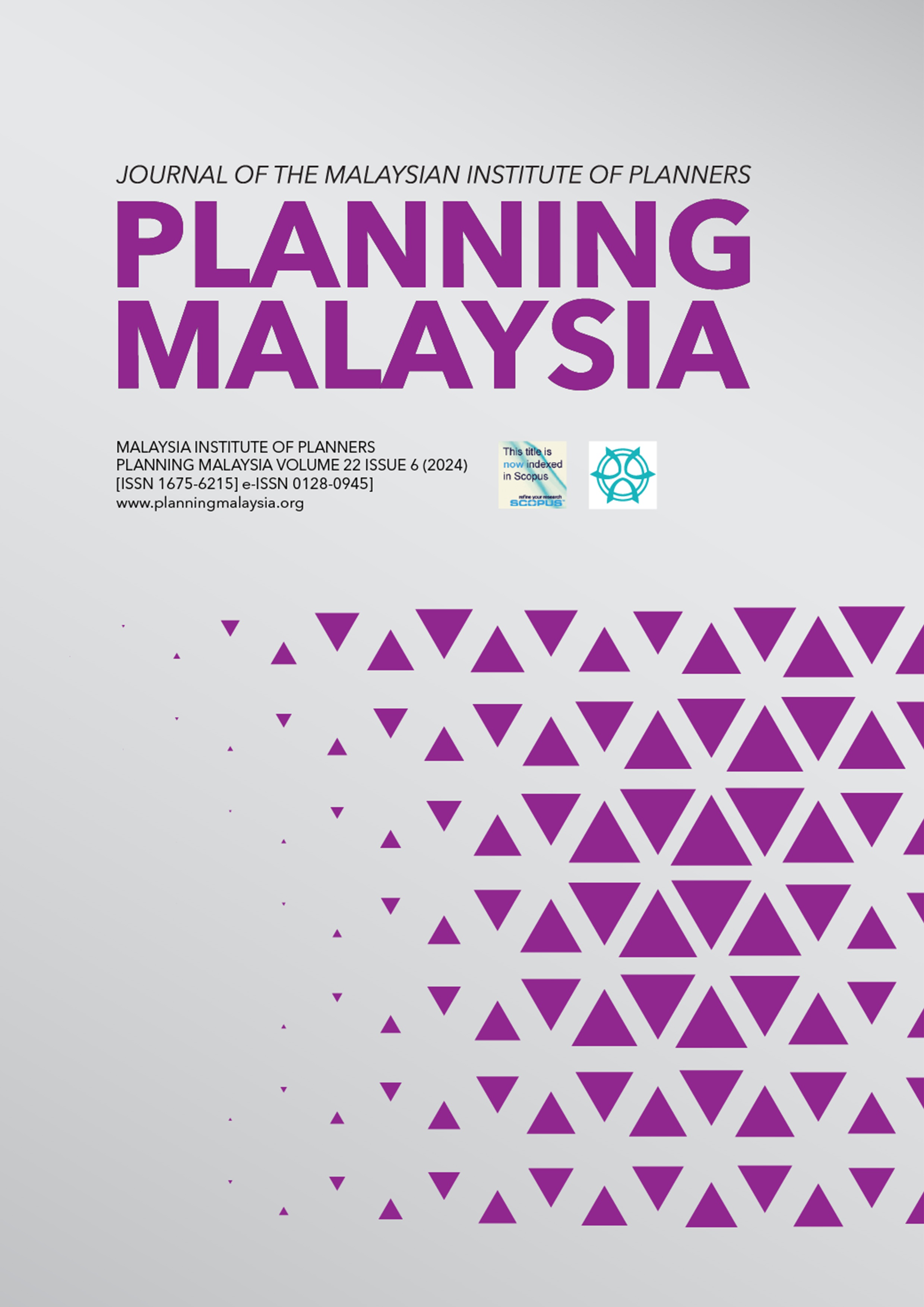THE VALUE OF ARTS AND CULTURE: A CASE STUDY ON CREATIVE PLACEMAKING IN HIN BUS DEPOT, PENANG, MALAYSIA
DOI:
https://doi.org/10.21837/pm.v22i34.1643Keywords:
Arts, Cultural, Engagement, Awareness, Creative Placemaking, Hin Bus DepotAbstract
The arts and cultural sector are essential in sustaining George Town, Penang's UNESCO World Heritage Status. Creative placemaking incorporating the power of arts and culture can add value to the city's public space design. It involves revitalising abandoned public spaces to enhance neighbourhoods and strengthen local communities. This study aims to discover community participation and awareness in arts and culture. They are taking Hin Bus Depot, a creative hub in the heart of George Town, as the case study examines the impacts of creative placemaking projects on the community. In this context, creative placemaking is the approach that integrates arts and culture into a public space to enable transformation while also building character and quality of place. To test the hypothesis that arts and culture can positively impact the community, an online questionnaire survey was distributed to the locals and visitors of Penang. Respondents were asked about demographics, engagement, and awareness of arts and culture. The results showed the community's positive relationship with arts and culture and the success of Hin Bus Depot in bringing beneficial impact. The community's engagement in arts and culture has increased, contributing to the support of George Town's local arts scene. The concept of creative placemaking should be considered to promote better urban design in the future.
Downloads
References
Arroyo, J., C, PHD, AICP. (2020). Bridging Divides, Creating Community. Arts, Culture, And Immigration.
ArtsWok Collaborative. (2018). An Interview with Janet Pillai. Retrieved from https://artswok.org/resources/articles/an-interview-with-janet-pillai/
Bai Fan, Mohd Ismail Isa, Badaruddin Mohamed. (2024). The Relationship Between Tourist Experience, Place Attachment, and Post-Visit Intentions: An Application of S-O-R Paradigm in the Context of Hangzhou, China. Journal of the Malaysian Institute of Planners. Volume 22, Issue 5: Page 156-167. https://doi.org/10.21837/pm.v22i34.1580 DOI: https://doi.org/10.21837/pm.v22i34.1580
Cohen, M., Maund, K., Gajendran, T., Lloyd, J., Smith, C., & Landcom (Firm). (2018). Communities of practice collaborative project: valuing creative placemaking: development of a toolkit for public and private stakeholders. Stage 1, Literature review 2018.
Crossick, G., & Kaszynska, P. (2016). Understanding the value of arts & culture: The AHRC Cultural Value Project. Arts and Humanities Research Council, 1–204.
Erickson, J. S. (2016). Livability and Creativity: Civic Innovations at the Intersection of Arts, Culture, and Planning. M.A. Urban and Environmental Policy and Planning thesis. Medford: Tufts University.
Isa, M. I. (2020). Evolution of Waterfront Development in Lumut City, Perak, Malaysia. Planning Malaysia. Journal of the Malaysian Institute of Planners. Vol. 18 Issues 3, pp. 104-117. http://dx.doi.org/10.21837/pm.v18i13.778 DOI: https://doi.org/10.21837/pm.v18i13.778
Isa, M. I., Hedayati Marzbali, M., & Saad, S. N. (2022). The mediating role of place identity in the relationship between place quality and user satisfaction in waterfronts is a case study of Penang, Malaysia. Journal of Place Management and Development, 15(2), 130-148. DOI: https://doi.org/10.1108/JPMD-08-2020-0083
Jagannath, T. (2015). The Effect of Public Art on Public Spaces. Poets, Worms and Street Art.
Khoo, S. L. (2016). Understanding culture and creativity in urban development: what it means for George Town, Penang? Geografia: Malaysian Journal of Society and Space, 12(13), 1–11.
Lew, A. A. (2017). 'Tourism planning and place making: place-making or placemaking?' Tourism Geographies, 19(3), 448-466. doi:10.1080/14616688.2017.1282007. DOI: https://doi.org/10.1080/14616688.2017.1282007
Markusen, A. (2014). Creative Cities: A 10-year Research Agenda. Journal of Urban Affairs, 36(S2), 567-589. DOI: https://doi.org/10.1111/juaf.12146
Markusen, Ann, and Anne Gadwa. (2010). Creative Placemaking. Washington, DC: National Endowment for the Arts.
Placemaking For A Post-Pandemic World. (2021, January 8). The Citymaker by Think City. Retrieved from https://thecitymaker.com.my/placemaking-for-a-post-pandemic-world/
Project for Public Spaces. (2014, October 20). Leveraging the Value of Heritage in Malaysia through Placemaking. Retrieved from https://www.pps.org/article/understanding-the-value-of-heritage-in-malaysia
Redaelli, E. (2014). Assessing a place in cultural planning: A framework for American local governments. Cultural Trends, 22(1), 30-44. DOI: https://doi.org/10.1080/09548963.2013.757893
Redaelli, E. (2018). Creative placemaking and theories of art: Analysing a place-based NEA policy in Portland, OR. Cities, 72(October 2017), 403–410. https://doi.org/10.1016/j.cities.2017.10.001
Redaelli, E. (2018). Creative placemaking and theories of art: Analysing a place-based NEA policy in Portland, OR. Cities, 72(October 2017), 403–410. https://doi.org/10.1016/j.cities.2017.10.001 DOI: https://doi.org/10.1016/j.cities.2017.10.001
Stallings, S. N., & Mauldin, B. (2016). Los Angeles County Arts Commission Public Engagement in The Arts A Review of Recent Literature Los Angeles County Arts Commission Developing A Common Framework for Public Engagement in The Arts A Review of Recent Literature.
Sung, H. (2015). The Influence and Role of Arts on Community Well-being. Foreign Affairs, 91(5), 1–195.
Till, K. E., & McArdle, R. (2015). The improvisational city: Valuing urbanity beyond the chimaera of permanence. Irish Geography, 48(1), 37-68. doi:10.2014/igj.v48i1.525. DOI: https://doi.org/10.55650/igj.2015.525
Downloads
Published
How to Cite
Issue
Section
License

This work is licensed under a Creative Commons Attribution-NonCommercial-NoDerivatives 3.0 Unported License.
Copyright & Creative Commons Licence
eISSN: 0128-0945 © Year. The Authors. Published for Malaysia Institute of Planners. This is an open-access article under the CC BY-NC-ND license.
The authors hold the copyright without restrictions and also retain publishing rights without restrictions.


